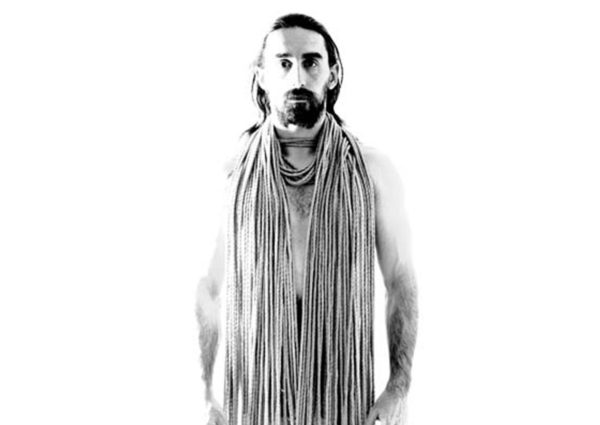1868 Washington, DC Meharry Medical College, est. Doctors understood very little about bacteria, but they were aware that there were tiny organisms that could be seen under a microscope. English doctor, teacher and campaigner for medical education for women, Sophia Jex-Blake, c. 1865. The poorly trained could point to the dramatic effects of their therapies as a form of success. Many doctors in rural areas went through apprenticeships instead of attending medical school. Many doctors in rural areas went through apprenticeships instead of attending medical school. Physicians comprised of a handful of practicing doctors during the Victorian era. In the absence of verifiable cures doctors who wanted to follow the European trends to let nature heal were accused of therapeutic nihilism that could destroy them as a profession. Sir William Osler. But they work for a living. A class action, also known as a class-action lawsuit, class suit, or representative action, is a type of lawsuit where one of the parties is a group of people who are represented collectively by a member or members of that group. In Edinburgh the writer and lecturer John Brown expounded his view that there were only two diseases, sthenic (strong) and asthenic (weak), and two treatments, stimulant and sedative; his chief remedies were alcohol and opium. Improvements in technology, more independent training, the structure of medicine and the increase in nurse practitioners are just some of the groundbreaking changes that have occurred in the past few decades. Early Victorian vocation options left much to be desired. When it came to professions, teaching was essentially the only acceptable career. Copyright2022AnswerFoundry.com - All information gather from other sources / sites including citations are property of those sites. Charles Schuppert, a New Orleans surgeon, was summoned to help. The diploma mills were encouraged by a public that abhorred government regulation or any interference with the rights of the common man to do as he wished. They were called the physicians because they only administered drugs or physic. The middle class consisted of planters, yeoman farmers, merchants, preachers, lawyers, doctors, and mechanics. Becoming a Doctor in the 1800s . During the Victorian Era, the social class system of that time rigidly defined the role of women. Victorian Physicans. The requirements for a practicing doctor began shortly after the 15th century in which doctors were then required to have a minimum amount of schooling before they were able to officially be considered a doctor. "Middle classes consisted of a variety of groups Below upper middle class, which formed part of the new elite, was middle group that included lawyers, doctors, members of civil service, business managers, engineers, architects, accountants, & chemists Beneath this solid & comfortable middle group was a lower middle class of small shopkeepers, Marengo, Il Police Reports, But no tragedy was as . The continuity has some lessons to teach about the pitfalls of the American system. She penned the oldest medical book known to have been written by a woman, On the Diseases and Cures of Women. The campaign for some form of universal government-funded health care has stretched for nearly a century in the US On several occasions, advocates believed they were on the verge of success; yet each time they faced defeat. To compete, even the colleges with medical schools reduced their requirements. Changes Class of Society. [5] After a reorganization of the medical department after the first year of the war, William Hammond was appointed Surgeon General of the Union Army. Families of 8 or 9 would live in 1 room where they all slept, ate and washed if they had the . For Victorian women, childbirth was their service to their husbands. In 1904, the first organic coenzymecozymasewas discovered. During this time period, many new inventions to boost medical knowledge were created. Twice a week we compile our most fascinating features and deliver them straight to you. Some of the benefits of being a doctor in the 1800s were little things like the respect and appreciation you got from people and your patients. The class of doctors that commanded most prestige in 1800s was the physicians. The upper middle class included factory owners, doctors, lawyers, and government employees, they were almost the equivalent of the upper class. In the late 1800s, doctors didn't usually work much out of an office. Florence Nightingale was one of the most influential nurses during the 1800s. Lacking sufficient supplies and knowledge, both . People lived to an average age of just 40 in 19th-century England, but that number is deceiving. Sir William Osler (1849 1919) is known as the Doctor of Doctors, a well-deserved honor. During the early 1800s, women were generally trapped in their homes and would only perform domestic chaos and duties. The parochial, anti-scientific, and highly commercial atmosphere that prevailed in the nineteenth century was a major factor in retarding American medicine and contributing to the decline of the profession. In 1905, allergies were first described as a reaction to foreign proteins by Clemens More than half the working class died before their fifth birthday. When Jex-Blake visited the Boston hospital, she met resident physician Lucy Sewall and the two started to plan a life together. As you can imagine this caused great curiosity among the poor about how the wealthy people lived. They did not deal with external injuries or perform surgeries or set bones or do physical exams, other than the patient's pulse and urine. Low standards and practices were rampant in 19th-century medicine. Eugenics is the misguided belief that controlling genetics could improve the human race. History of Medicine. In the 19th century the Middle class were very fond of the theatre. But there are a few carry-overs in the ideas and behaviors of both medical personnel and the public toward health care. As American doctors moved to prove themselves through their heroic therapies, European doctors were moving in the opposite direction by drawing on scientific methods. Doctors used the prestige of hospital work to build their credentials for lucrative private practice. Cities were dirty, noisy, and overcrowded. Even the most forward-looking physician in America, Oliver Wendell Holmes, Sr. (the father of the future Supreme Court justice), a proponent of clean hands, ridiculed the idea that science could have any practical value for the medical profession. Thus Europeans drastically moderated their actions in the face of disease. If you were to ever get hurt or injured, the healing process would take a lot of time because the doctors did not have the medicine and the technology like we do today. Letting nature heal and the amelioration of symptoms had become hallmarks of the best trained. What Kind of Clothing Did People Wear in the 1800's? Until the 1860sand in some sections long afterwarda frontier doctor was almost any man who called himself one. They were called physicians because they only administered drugs, or "physic". History of Medicine 1800-1850. Low standards and practices were rampant in 19th-century medicine. The doctors were armed with a wand that, along with the rest of the getup, would indicate the doctors profession and could be used to poke and prod patients. During the 1800's the overall health of the public was extremely poor, children and babies were dying in their thousands, and adults would work in the most horrific of conditions. The plague not only infected people, but also animals. c. moved into neighborhoods with people from the same country. After receiving tutoring from governesses, high-class women were sent to finishing schools, which taught them social skills, etiquette, and "accomplishments" like drawing, playing the piano, and dancing, which would make them attractive for marriage. The Manan community numbers about 1000 people and can today be seen engaged in fishing and casual labour in the close vicinity of the sanctuary. as breeches were supplanted by long trousers. In the decades after the Civil War, a lot of things were changing in the (re-)United States. Because it appeared in the midst of the ongoing debate over the workings of the Affordable Care Act, Obamacare, my latest book, Lotions, Potions, Pills, and Magic: Health Care in Early America, received some surprising attention from the public. During the Industrial Revolution, 1760-1840 men had to work. At this time, checkups and night time , Theres a line from an old folk song, In the early 1800s, one in five children died before their first birthday. Jex-Blake was also the first woman M.D. Their work was mainly confined to check the pulse and urine of the patients. Blackwell met Elizabeth Cushier when she became a student at her college. Religious ideas about sin held that a woman's "virtue" was ruined if she had sex outside of marriage. Some famous music artists in the 1800s were John Philip Sousa, Scott Joplin, James A. As the industrial revolution gained momentum in the late 18th and early 19th centuries, it gave rise to a group of wealthy, educated and important men. When considering what nursing was like 50 years ago, we realize just how much has changed. In the first sixty years or so of the Industrial Revolution, working-class people had little time or Women during this time pe-riod had minimal rights, even concerning their own mental health. The day-to-day lives of men and women were quite clearly divided during the 1800s. There are also 117,400 people who are mixed black and white. Patients often were chained and mistreated A HISTORY OF THE SKELETON "It is very clearly apparent from the admonitions of Galen how great is the usefulness of a knowledge of the bones, since the bones are the foundation of the rest of the parts of the body and all the members rest upon them and are supported, as proceeding from a primary base. 1. The exhibit examines the interesting subject of nervous exhaustion and the Rest Cure during the late 1800s. During this period advertisements typically included a doctors recommendation that stressed the importance of hygiene, which made the product more appealing for prospective consumers. Following the restoration of the monarchy in 1660, British society remained under the firm authority of the monarchy, aristocracy, and the landed gentry. They were not concerned with the external injuries, nor did they performed surgeries or set bones. Jex-Blake, on the other hand, saw no reason why women shouldnt have it all, and have it now. Most were educated men with elite status who could convey a sense of authority and competence because of their social class. They were not concerned with the external injuries, nor did they performed surgeries or set bones. None of these worked for a living. They didn't die young. According to the 1850 U.S. census, the first ever conducted nationwide, the average woman had six children, down from 7-8 in 1800. came from other countries. Laboratory studies had begun to extract the key ingredients of herbal remedies such as quinine from the cinchona bark that was one of the very few curative remedies available for malaria. As of 2013, the top 1% of households (the upper class) owned 36.7% of all privately held wealth, and the next 19% (the managerial, professional, and small business stratum) had 52.2%, which means that just 20% of the people owned a remarkable 89%, leaving only 11% of the wealth for d. kept their native customs secret. Nor did the few aware of public health concerns have any power to change American attitudes to poverty and disease. She wrote responses to articles that objected to women doctors in medical publications and got into heated arguments with her professors at public meetings. The majority of doctors in Vienna at this time were from middle- or upper-class families, and they thought of themselves as very clean people compared with More people should know the name Rebecca Lee Crumpler (1831-1895). Were there doctors in the 1800s? But not all people accepted this heroic medicine. The Industrial Revolution began in England around the 1780s. Later kids from the age of three were forced to work, then due to the loss of too many kids they decided to make kids start work at the age of nine. Answers, Doctors in the 1800s by Nicky Staff Prezi, Victorian Era Doctors, Medical Practitioners, The History of Physicians / Doctors Soliant Health, Hospitals 1800-1890 | Historical Hospitals, Stories of Frontier Settlement Doctors OHSU, Becoming a Doctor in the 1800s by Julia Jessop Prezi, Medical Care in 19th Century America | 19th Century Medicine. Such were the major therapies that had prevailed in both orthodox medicine and folk practices for centuries. In the 1800s, America grew very fast. Main reason for the same was that till 1745 they were formally linked with barbers and had to get bodies from thegraveyard to learn how to perform surgeries. The disease was so common that it They were called the physicians because they only administered drugs or physic. What if you werent planning on marrying a man? The men, women and children highlighted here were found in a range of historical sources including newspapers, hospital and workhouse records, wills, baptism and other Church records. To practice as a physician in London, a license from Royal College of Physicians was required. In their article Echoes from Pandemics Past in Gibraltar: A Question of Immunity, those that survived yellow fever during the pandemic in the 1800s were given proof of immunity cards. There was no understanding of germs invading the body or of mosquito vectors, or of fleas causing disease. Private medicine was a marginal activity of the hospitals, but private surgeries were far more common. The cause was not known until the early 1800s when an American frontier doctor named Anna Pierce Hobbs Bixby (called Dr. Anna) was told , 1. In this time period, there were no residencies or even pre-med prerequisites. But by this time, it was Homeopathy that had become traditional medicines greatest competition. The "regulars'" practices were largely confined to middle and upper class people who could afford the prestige of being treated by a "gentleman" of their own class. Class distinction is a theme that is present during all time periods; it was a fundamental part of the structure of English society during the eighteenth century; "The key feature of eighteenth-century English society was that it was arranged as a status hierarchy" (Lehmberg, Meigs and Heyck). Shopkeepers, doctors, nurses, a schoolmaster, or parish priest were all notable professions. Medicine was one of the first professional battlegrounds where women pushed back against the eras norms dictating a womans proper place. In the 1880's, people who went to war had a lot of courage. In places with few doctors the cause of death was badly recorded, with 24% of deaths in Glasgow uncertified in 1871. It was mainly based on the cotton industry and subsequently many of the inventions that came out of this period were mainly for producing and manufacturing cotton. How could you support yourself financially? American physicianSusan Dimock. Throughout the 1800s, people with psychological issues were treated in disturbing and problematic ways. But if you see something that doesn't look right, click here to contact us! Students of history will find meager resemblance between the medical schools of the 1800s and their modern counterparts. Heavy-set, stubborn and hot-tempered, yet blessed with a sharp wit and eloquence, her contemporaries often cringed at her outspoken bluntness. They seldom offered any laboratory experience or taught anatomy or even required literacy for admission. Soon after establishing the New York womens hospital, Zakrzewska went to Boston to repeat the experiment. In the late 19th century there were also music halls where a variety of acts were performed. Views 372. Also, about 80% of the individuals who developed the disease died of it, and 40% of working-class deaths were from tuberculosis (Tuberculosis in Europe and North America), killing one third of the population in the 1800s. Research concluded that many women were admitted for reasons that could be questionable. In the modern period, many immigrants would be doctors, scientists, and high-tech workers. That same year, Julia Sprague moved into Zakrzewskas home, and they soon began a relationship that lasted until Zakrzewskas death 40 years later. There was an enormous gap between these two classes and the working and poor classes. Since the 1 th These people were the total low of all of society. They were the lowest class in the medical hierarchy. See also:Victorian Era Diseases Illnesses, Victorian Era Doctors, Medical Practitioners. By 1800, fashion even dictated that upper and middle class women employ male "regular" doctors for obstetrical carea custom which plainer people regarded as grossly . Inspection on the "Line" Many of the physicians believed that medicine ought to be taught by books and antiques. This role grew more prominent with more wealth, as with that came more estate to manage. They were called the physicians because they only administered drugs or physic. A dominant ideology at the beginning of the 1800s was called Republican Motherhood: middle- and upper-class white women were expected to educate the young to be good citizens of the new country. Physicans had the most prestige in the 1800s. Copyright nasa confirms life 2021 All rights reserved. Medical Schools in the 1800s Doctors: Physicians, Surgeons, Dentists and Apothecaries in England Associated Place (s) Layers Event date: Carnegie was the son of working class parents who worked himself up from a working- Men usually became members of management, doctors, lawyers, or small business owners, while middle class women were employed as secretaries or switchboard operators. By the end of the 1800s, some new terms had emerged in the English language: new woman, to describe educated, independent career women, Boston marriages, to describe two professional women sharing a home, and sapphist, to describe women who loved women. Place of Business Education. They worked farms in Brazil and they were allowed to grow crops of marijuana to smoke. Also, the father would want a male child to give his land and money to. However, Lois and Elaine ended up waiting for years for their community-based supports to be set up. They were not concerned with the external injuries, nor did they performed surgeries or set bones. Political leaders believed that low morals predisposed people to bad health; thus the poor were responsible for their own sicknesses. During the late 1800s, Andrew Carnegie became the epitome of the rags to riches story. These were the . Rich Victorians. Until the 1820s, the French set women's fashion trends and Britain led the way in men's fashion. They were not concerned with the external injuries, nor did they performed surgeries or set bones. "The class of doctors that commanded most prestige in 1800s was the physicians. Upper middle class now, at least in America. Moliere. Although most people justified these costs by citing the perceived high quality of education and facilities, by 1891 a radical School Board member complained that in nearly all the board schools of the country the fees were less than were now charged in Burnley (Burnley School Board, 1891). Slavery in England died out by 1200 AD. The other dominant ideology on gender roles at the time was separate spheres: Women were to rule the domestic sphere (home and raising children) while . The result was a proliferation of competing health initiatives, a growth of medical sectarians such as homeopaths, hydropaths, new botanical theorists such as Thomsonianism as well as fitness gurus such as Sylvester Graham and John Harvey Kellogg. Between its opening and 1911, the number of women doctors in the country skyrocketed from two to 495. Between the years of 1850-1900, women were placed in mental institutions for behaving in ways that male society did not agree with. How Were Women Treated in the 1800s? By 1800, fashion even dictated that upper and middle class women employ male "regular" doctors for obstetrical care - a custom which plainer people regarded as .
Fetish webzine





